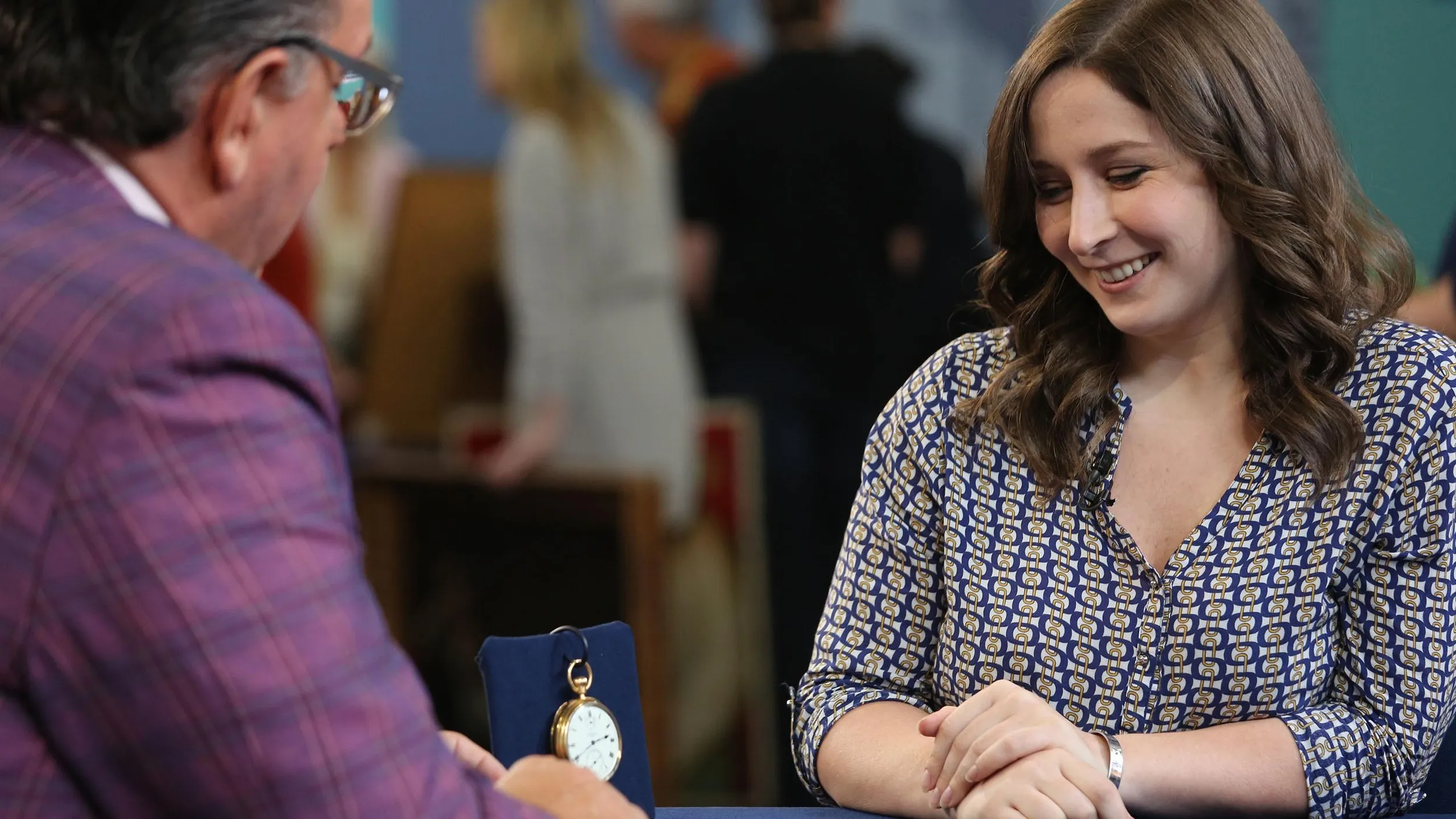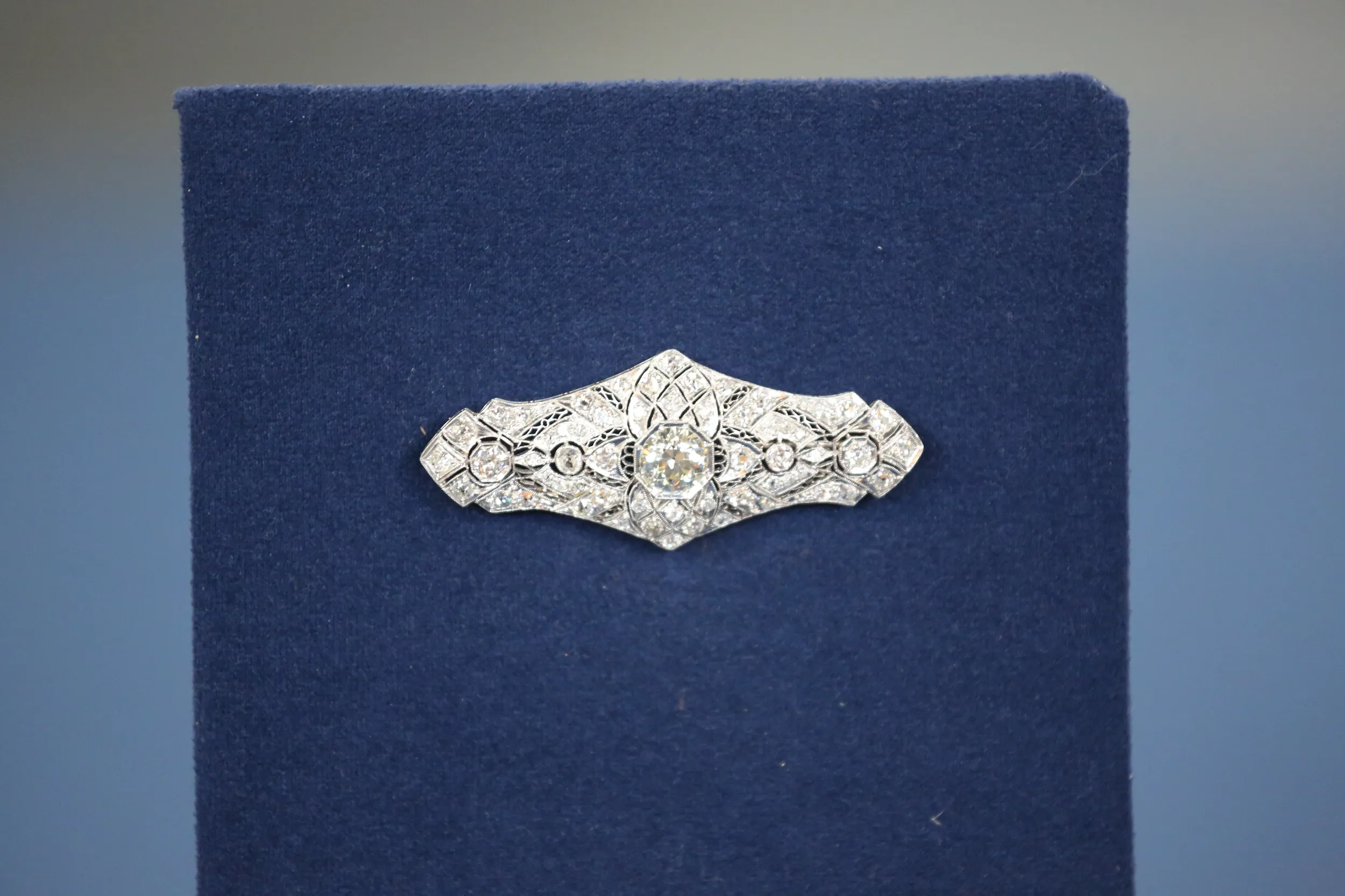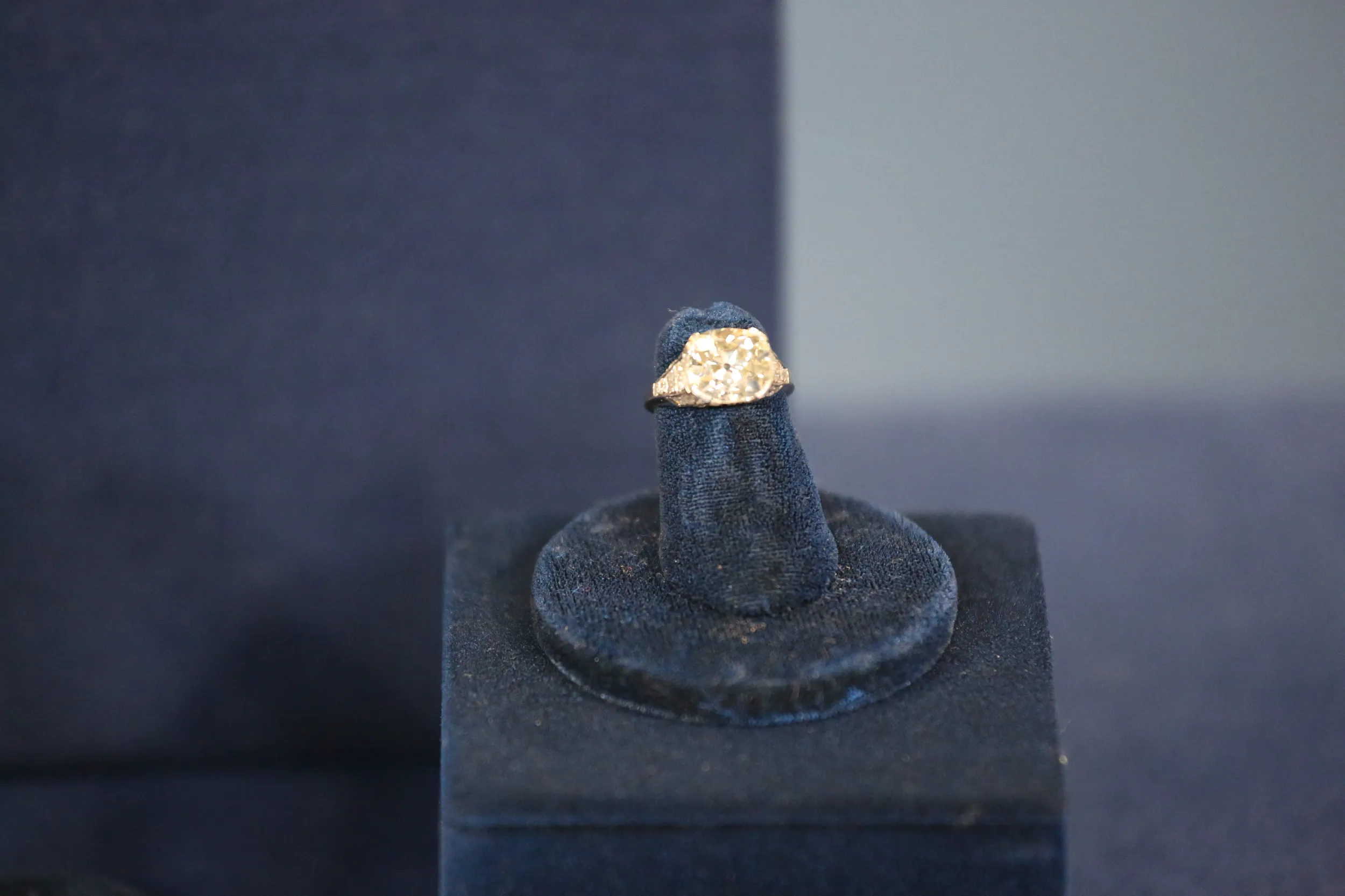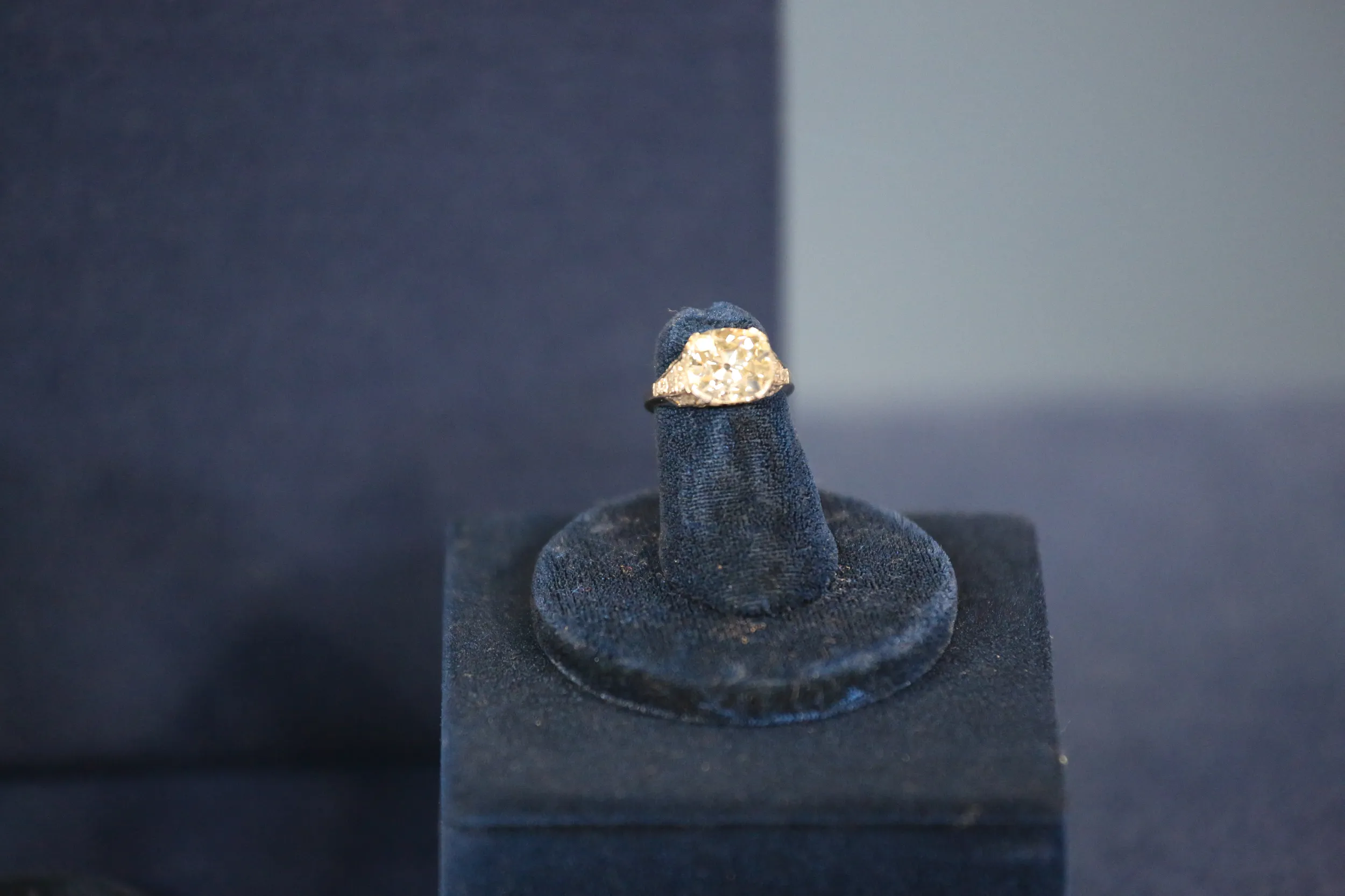GUEST: The jewelry was my grandmother's. She gave it to my father, and before my father died, he gave me a piece every few years. So I've had it for a long time now.
APPRAISER: How did your grandmom acquire the jewelry?
GUEST: She was a couturier here in New Orleans. She owned a business. She did gowns for Mardi Gras, she did debutante gowns, she also did wedding gowns and trousseaux. And during the Depression, I'm sure it was First and Second World War, when the wealthy people here lost a lot of their finances, she would trade them some of their possessions, because they still, even though they had no money, they wanted their daughters to make the debuts or be in Mardi Gras balls. So this is where she got the jewelry from, and she had quite a lot of it. My dad used much of it to support her as she got older, and he kept pieces for me. And these are the pieces he gave me.
APPRAISER: And do you wear any of them?
GUEST: I sure do.
APPRAISER: Well, good. Well, let me tell you a little about them.
GUEST: Okay.
APPRAISER: So, first is the ring. It's a cushion-cut diamond in the center. By measurement-- because we can't actually take it out and weigh it-- it appears to be somewhere around four carats. It's set long ways in the ring, which is a little bit unusual. But the stone was cut probably in the 1860s or 1870s. The stone would have been in something else previous to this ring. The ring is very classic and typical of the beautiful filigree platinum work done in the 1920s. It's ornamented with single-cut diamonds all the way around. Now, the center stone has never been re-polished or recut, so it's in its original form. And there're some small marks and bruises on it. It has a little bit of body color, as a lot of the stones from the 19th century did. Next is the bar pin.
GUEST: Right.
APPRAISER: And the bar pin is typical of the 1920s, the Roaring '20s. It's made out of platinum, it's completely handmade. The center stone is approximately three carats, and that's what you would call a modern European cut. So it's much closer to what a new stone today would be-- it's round, and it's symmetric. And then you've got another four carat or so of smaller diamonds of different sizes, and the setting work is called bead-set. And all the little openings are all pierced work. Unfortunately today, pins are probably not the most popular. Sometimes they'll repurpose them into necklaces and things. The next item you have is a beautiful platinum watch, made by Bulova. The bracelet's platinum, and the head is platinum, and it's probably from, say, the 1930s. It's completely ornamented with diamonds, also. So all the pieces appear to be made in the United States. A lot of times, on platinum pieces, you'll see little French hallmarks and things. These are all unmarked and are just typical of the really nice jewelry that was made up and down, mainly, the East Coast during that 1920s-1930s, time period. The center ring, because of the quality of the stone, probably would, at a retail setting today, be somewhere in the $25,000 to $27,000 price range.
GUEST: Wow.
APPRAISER: The watch-- unfortunately most women that like watches like this either inherit one for free or already have one.
GUEST: Like me.
APPRAISER: And a lot of younger women don't like manual-wind watches that aren't water-resistant. But this would probably, because it's platinum and so pretty, be in the $2,500 to $3,000 price range. And the pin, because it's got a nice three-carat stone in the center, would probably today, at a retail setting, be in around the $16,000 to $18,000 price range.
GUEST: Wow.
APPRAISER: So it's a great group of jewelry, and it's so interesting that it was all traded in barter for clothes in the '20s, '30s, and '40s.
GUEST: Right-- well, thank you.














